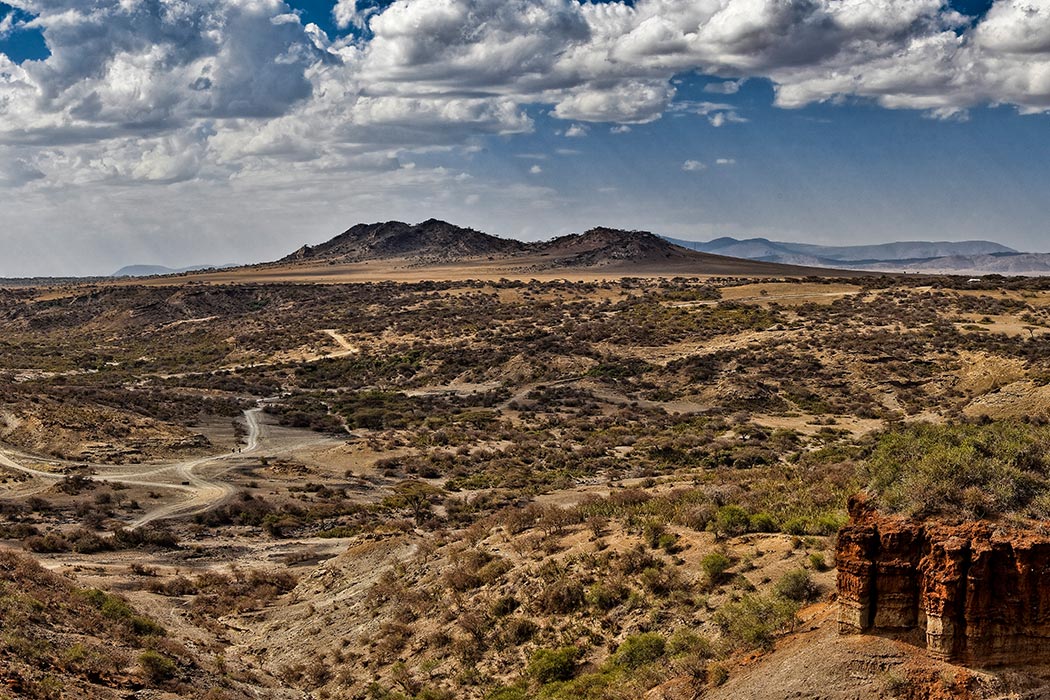In her career as a paleoanthropologist, Mary Leakey made some most remarkable discoveries. She discovered the first Proconsul skull, one of the earliest hominoids known. She found hominid footprints in Laetoli thought to be 3.6 million years old. And she unearthed the “Zinjanthropus skull,” one of the most famous fossils at the northern Tanzanian site called Olduvai Gorge.
Since Leakey and her husband Louis discovered the riches of the Gorge in 1959, Olduvai has become one of the most important paleoanthropological sites in the world. In 1979, it was designated as a UNESCO World Heritage site. The gorge is 30 miles long and 295 feet deep. Deposits exposed in its sides are dated to as far back as 2.1 million years. Fossils from more than 60 hominins, a category that includes our ancestors, have been found there. Scientists have continued working there beyond the careers (and lifespans) of the Leakeys, collecting evidence to reconstruct a picture of what life looked like 1.8 million years ago. Some of these findings were published recently in the Proceedings of the National Academy of Sciences.
The evidence suggests that hominids living there competed with carnivores such as lions, leopards, and hyenas. Based on the high concentration of bones found at the site, the PNAS team think that these primates obtained carcasses elsewhere and then ate in the woods, where they were safer. The animals they ate included giraffes, elephants, wildebeests, and the swift runners of the antelope family.
Other studies have shown that among the artifacts of ancient animals at Olduvai Gorge are the fossils of what are thought to be the world’s oldest donkeys. “Members of the subgenus Asinus are usually diagnosed by their small size and dental characters,” the author notes, but the origins of these creatures remains unknown. Researchers have also come across fossils of four species of turtles in the Gorge, suggesting that hominids foraged for these animals at the marshy banks of nearby lakes.
It isn’t just hominid remains that can tell us about the lives and times of that long ago time. Olduvai’s rich fossil record has revealed remarkable discoveries. New discoveries and research on older finds suggest that it continues to be a place where the history of evolution is unraveled.







